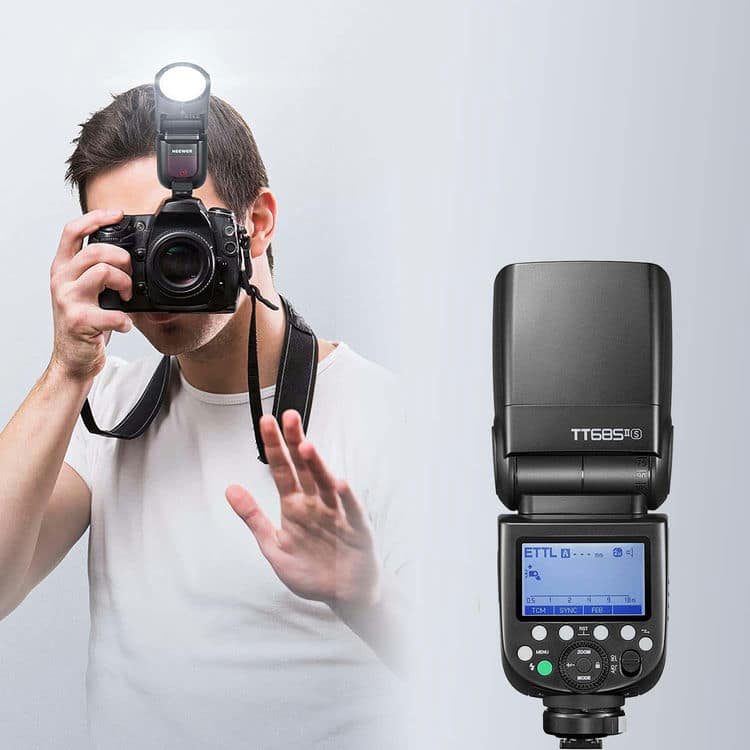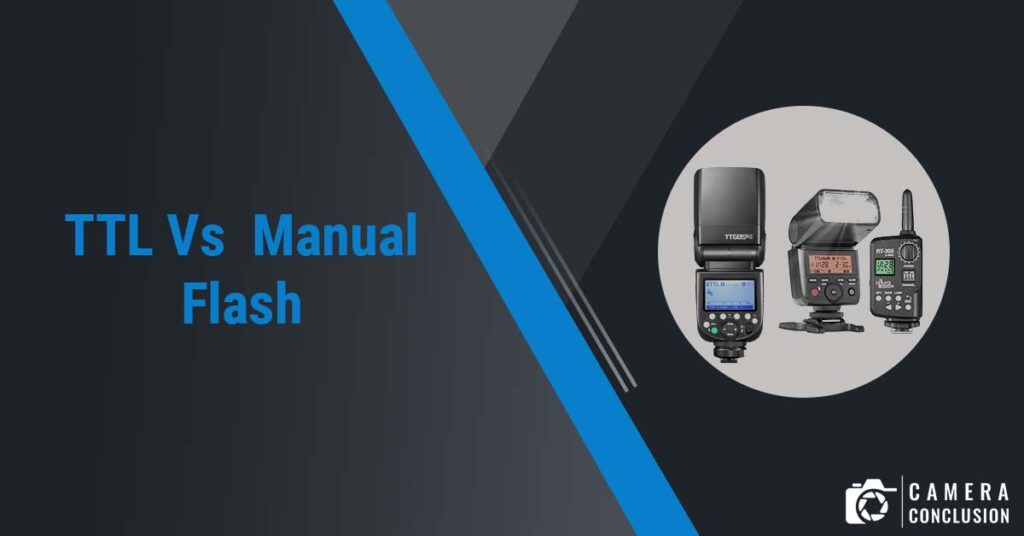Index
When it comes to using an external flash for photography, two main modes are available: TTL (Through The Lens) and manual. Each mode has its own advantages and disadvantages, and understanding the differences between the two is essential for achieving the desired results in different shooting scenarios.
TTL flash is a type of flash metering system that automatically calculates the amount of flash output needed to achieve a proper exposure. The flash is able to communicate with the camera and adjust its output based on the camera’s settings and the available light.
This mode is ideal for situations where the lighting conditions are constantly changing, as it can help to maintain consistent exposure even when the subject or camera position is changing.
On the other hand, manual flash mode allows the photographer to have complete control over the flash output, without any automatic adjustments.
This mode is ideal for situations where the lighting conditions are consistent, as it allows the photographer to fine-tune the flash output to achieve a specific effect or look.
In this article, we will explore the differences between TTL and manual flash modes in greater detail, and provide some tips for when to use each mode for optimal results.
Understanding TTL Flash
TTL flash, or Through The Lens flash, is a flash metering system that calculates the amount of flash output needed to achieve a proper exposure. This system works by measuring the light that enters the lens and adjusting the flash output accordingly.
In TTL mode, the camera communicates with the flash and provides information about the camera settings, such as aperture, ISO, and shutter speed. Based on this information, the flash calculates the amount of light required to properly illuminate the subject.
The flash then emits a burst of light that is adjusted based on the distance to the subject, providing the proper amount of light for a correctly exposed image.
One of the main advantages of TTL flash is its ability to adjust the flash output automatically based on the lighting conditions. This can be particularly helpful in situations where the lighting is constantly changing, such as at a wedding or event. TTL flash can help to maintain consistent exposure, even as the subject or camera position changes.
TTL flash can also be useful when shooting in low light conditions, as it can help to provide additional light to properly expose the subject. Additionally, TTL flash can be used in conjunction with other lighting equipment, such as reflectors or diffusers, to create more complex lighting setups.
While TTL flash can be a convenient and useful tool, it is not without its limitations. For example, TTL flash may struggle to provide proper exposure in situations with highly reflective or dark surfaces, as it may misinterpret the available light.
Additionally, TTL flash can be affected by ambient light sources, such as streetlights or fluorescent bulbs, which can cause inaccurate exposure readings.

Understanding Manual Flash
Manual flash mode is a setting on external flashes that allows the photographer to have complete control over the amount of flash output.
Unlike TTL flash, which automatically adjusts the flash output based on the camera’s settings, manual flash requires the photographer to set the flash output manually.
In manual flash mode, the photographer determines the amount of flash output needed based on the distance to the subject and the desired effect. The flash emits a burst of light that is consistent each time, providing the same amount of light for each exposure.
One of the main advantages of manual flash mode is the ability to fine-tune the flash output to achieve a specific effect or look. This can be particularly useful in situations where the lighting conditions are consistent, such as in a studio setting, where the photographer has complete control over the environment.
Manual flash can also be useful when working with multiple flashes or when using off-camera flash setups. In these situations, manual flash allows the photographer to balance the flash output and create more complex lighting setups.
However, manual flash can be more challenging to use than TTL flash, particularly for photographers who are just starting to work with external flashes.
Setting the flash output manually requires an understanding of the relationship between aperture, ISO, and flash power, as well as the distance to the subject. Additionally, manual flash requires more experimentation and testing to achieve the desired results.

Factors to Consider When Choosing Between TTL and Manual Flash
Lighting Conditions: TTL flash is typically better suited to situations where the lighting conditions are constantly changing, as it can adjust the flash output automatically to maintain consistent exposure. On the other hand, manual flash may be more appropriate for situations where the lighting is consistent and the photographer wants more precise control over the flash output.
Subject Movement: If the subject is moving or the camera position is changing frequently, TTL flash can be useful to maintain consistent exposure, even as the lighting conditions change. However, if the subject is relatively stationary or the photographer wants more control over the flash output, manual flash may be a better choice.
Skill Level: TTL flash can be easier to use for photographers who are just starting to work with external flashes, as it automatically adjusts the flash output based on the camera’s settings. Manual flash requires more skill and experience, as the photographer must set the flash output manually based on the distance to the subject and the desired effect.
Equipment: Some external flashes may only be compatible with TTL flash, while others may offer both TTL and manual flash modes. Photographers should check their equipment specifications to determine which mode is available and choose the mode that best suits their needs.
Creative Control: For photographers who want more creative control over the lighting and flash output, manual flash can be a powerful tool. By setting the flash output manually, photographers can achieve a wide range of effects and create more complex lighting setups
TTL
Convenient and Easy to Use: TTL flash is often more convenient and easier to use than manual flash, as it automatically adjusts the flash output based on the camera’s settings.
Consistent Exposure: TTL flash can help maintain consistent exposure, even as the lighting conditions or subject position changes.
Works Well in Low Light: TTL flash can be useful in low light situations where additional light is needed to properly expose the subject.
Compatible with a Wide Range of Equipment: Many external flashes and camera systems are compatible with TTL flash mode.
Limited Control: TTL flash mode offers less control over the flash output than manual flash, as the camera makes the decisions about the flash output.
May Struggle with Reflective or Dark Surfaces: TTL flash can struggle to provide proper exposure in situations with highly reflective or dark surfaces.
Affected by Ambient Light: TTL flash can be affected by ambient light sources, such as streetlights or fluorescent bulbs, which can cause inaccurate exposure readings.
Manual Flash
Greater Control: Manual flash offers greater control over the flash output, allowing photographers to fine-tune the flash output to achieve a specific effect or look.
Useful for Complex Lighting Setups: Manual flash is often preferred for more complex lighting setups, as it allows photographers to balance the flash output for multiple flashes or off-camera flash setups.
Consistent Flash Output: Manual flash provides consistent flash output for each exposure, which can be useful in situations where the lighting conditions are consistent.
Requires More Skill and Experience: Manual flash requires more skill and experience than TTL flash, as the photographer must set the flash output manually based on the distance to the subject and the desired effect.
Challenging in Changing Lighting Conditions: Manual flash may be more challenging to use in situations where the lighting conditions are constantly changing, as the photographer must adjust the flash output manually.
Choosing Between TTL and Manual Flash
Choosing between TTL and manual flash ultimately depends on the photographer’s needs and the shooting scenario. Here are some guidelines to help photographers make an informed decision:
Consider the Lighting Conditions: If the lighting conditions are constantly changing, TTL flash may be the best choice to maintain consistent exposure. However, if the lighting is consistent, manual flash may offer greater control over the flash output.
Determine the Subject Movement: If the subject is moving or the camera position is changing frequently, TTL flash can be useful to maintain consistent exposure. However, if the subject is stationary or the photographer wants more control over the flash output, manual flash may be a better choice.
Evaluate Skill Level: If the photographer is new to external flash photography, TTL flash may be easier to use and provide more consistent results. However, if the photographer has experience with manual flash and wants greater control over the flash output, manual flash may be the better choice.
Check Equipment Compatibility: Some external flashes may only be compatible with TTL flash, while others may offer both TTL and manual flash modes. Photographers should check their equipment specifications to determine which mode is available and choose the mode that best suits their needs.
Consider Creative Control: If the photographer wants more creative control over the lighting and flash output, manual flash can be a powerful tool. By setting the flash output manually, photographers can achieve a wide range of effects and create more complex lighting setups.
FAQs
Conclusion
In conclusion, the choice between TTL and manual flash ultimately depends on the photographer’s needs and the shooting scenario. TTL flash can be a useful tool for maintaining consistent exposure in rapidly changing lighting conditions or with moving subjects.
On the other hand, manual flash offers greater creative control over the flash output and is preferred for more complex lighting setups.
Photographers should consider factors such as lighting conditions, subject movement, skill level, and equipment compatibility when deciding between TTL and manual flash.
It’s also worth noting that many external flashes offer both TTL and manual flash modes, allowing photographers to switch between the modes as needed.
By understanding the pros and cons of each mode and considering the shooting scenario, photographers can make informed decisions to achieve the desired results.
Ultimately, the choice between TTL and manual flash comes down to personal preference and the specific needs of each photographer.
